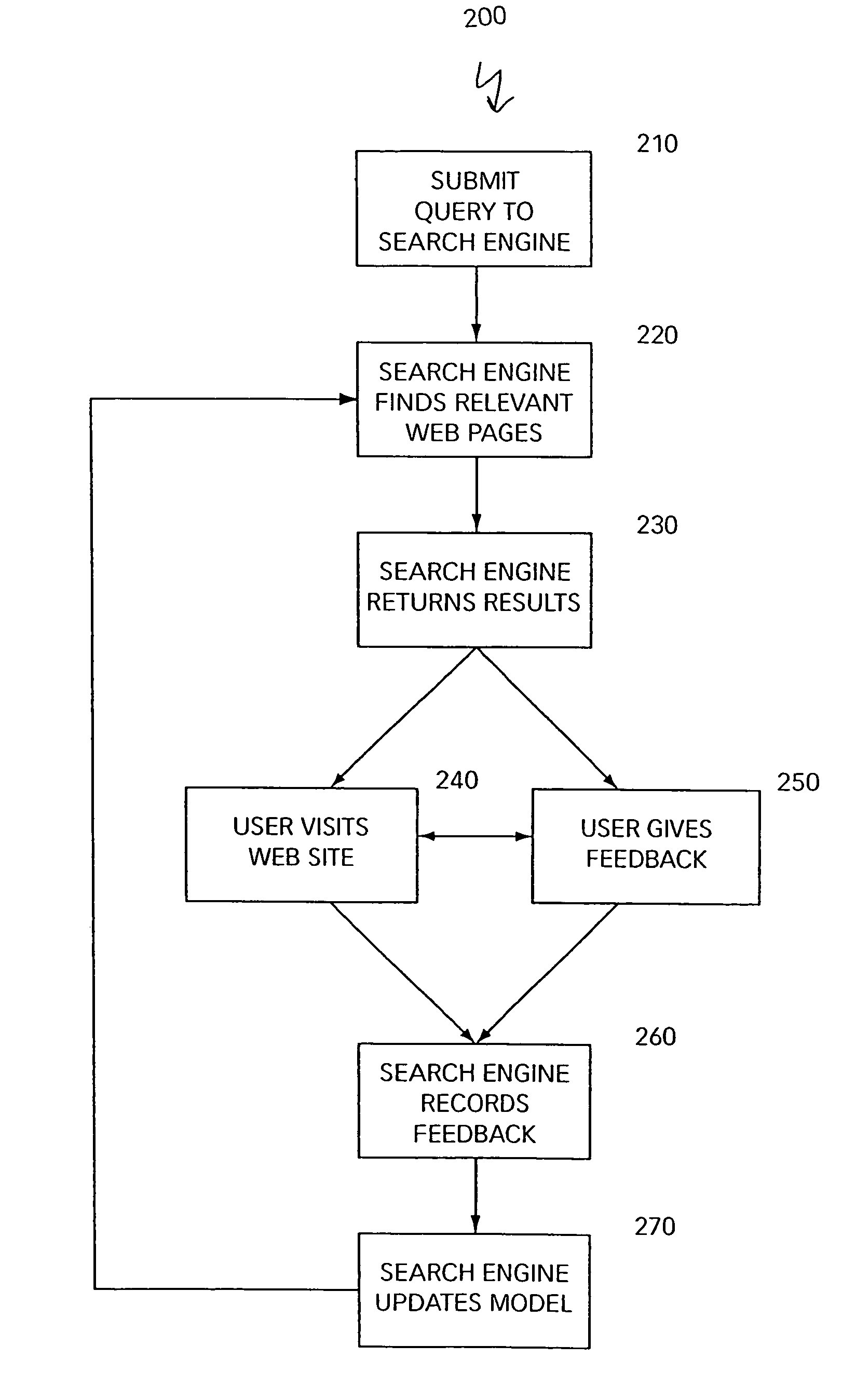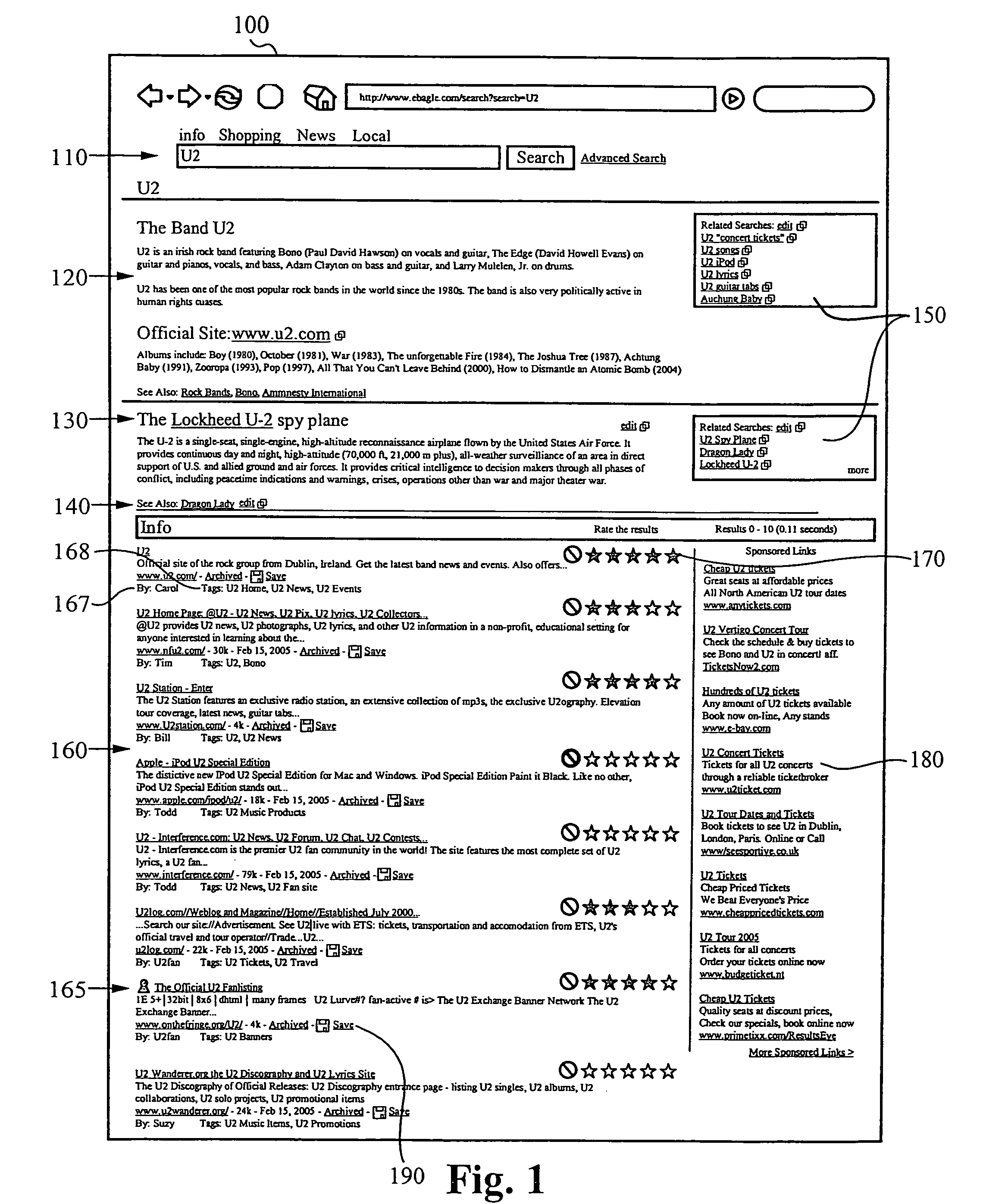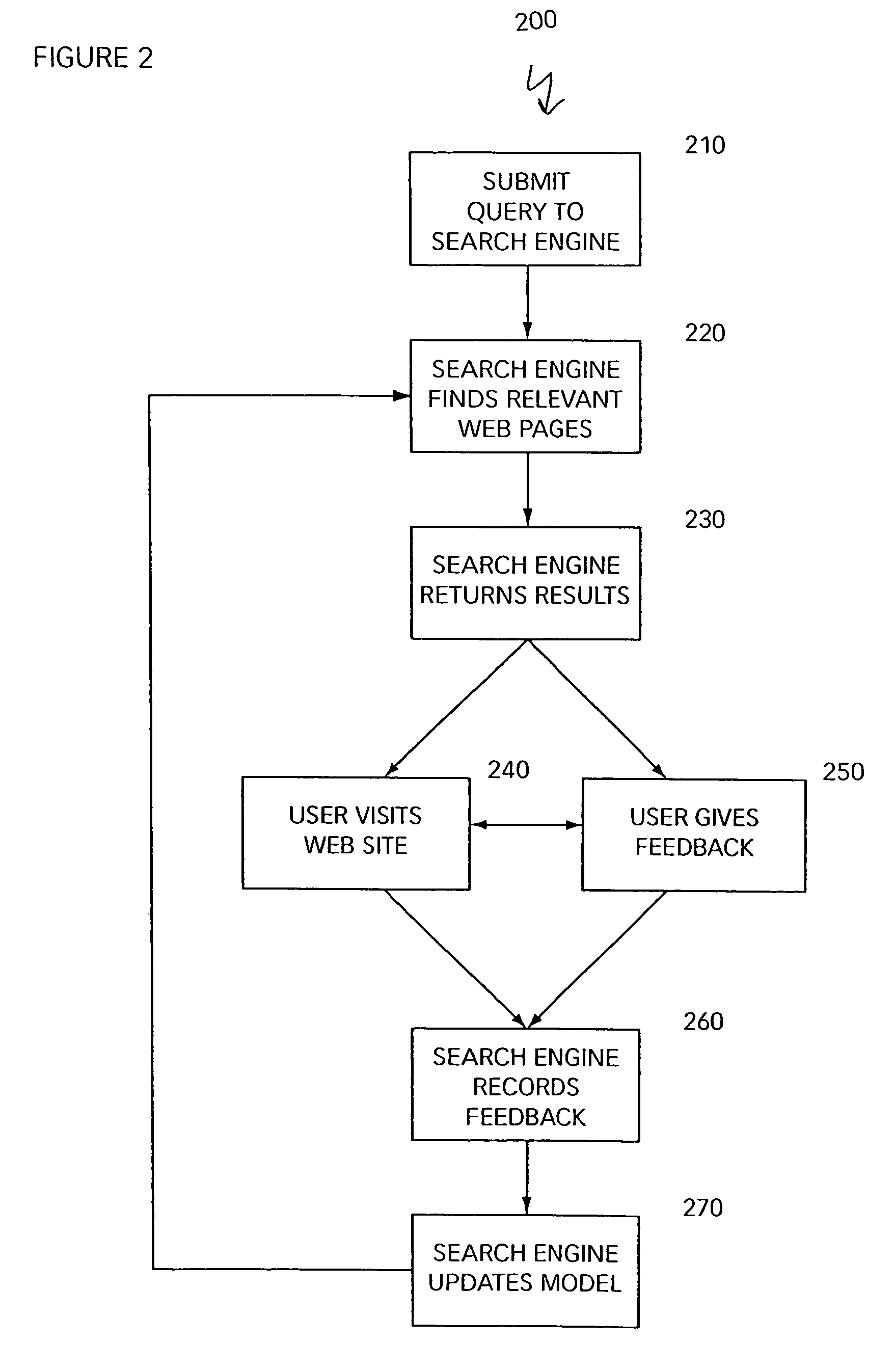Search engine that applies feedback from users to improve search results
a search engine and user feedback technology, applied in the field of internet search applications, can solve the problems of ambiguity in what type of information, difficult process of determining which web pages are most relevant, and most users are not sophisticated in the process of creating and entering well-formed queries, so as to increase the likelihood of returning documents
- Summary
- Abstract
- Description
- Claims
- Application Information
AI Technical Summary
Benefits of technology
Problems solved by technology
Method used
Image
Examples
Embodiment Construction
[0033]Embodiments of the present invention, unlike traditional search engines, make use of user feedback to provide more relevant information to users searching the Internet. For example, in accordance with the present invention, a first user performing a search is able to rate the results of that search. The first user can rate the results based on the relevance of the results to his search, the abundance of information contained in a specific Web page returned in a results list, or any other criteria. A second user performing a similar or related search is then able to view a results list based on or influenced by the rating of the first user, thereby displaying search results that are more likely most relevant to him. This second user is also able to rate search results. A community of users is thus able to provide feedback that helps users to receive search results that are as relevant to the information they are seeking as possible. Systems for and methods of using user feedbac...
PUM
 Login to View More
Login to View More Abstract
Description
Claims
Application Information
 Login to View More
Login to View More - R&D
- Intellectual Property
- Life Sciences
- Materials
- Tech Scout
- Unparalleled Data Quality
- Higher Quality Content
- 60% Fewer Hallucinations
Browse by: Latest US Patents, China's latest patents, Technical Efficacy Thesaurus, Application Domain, Technology Topic, Popular Technical Reports.
© 2025 PatSnap. All rights reserved.Legal|Privacy policy|Modern Slavery Act Transparency Statement|Sitemap|About US| Contact US: help@patsnap.com



